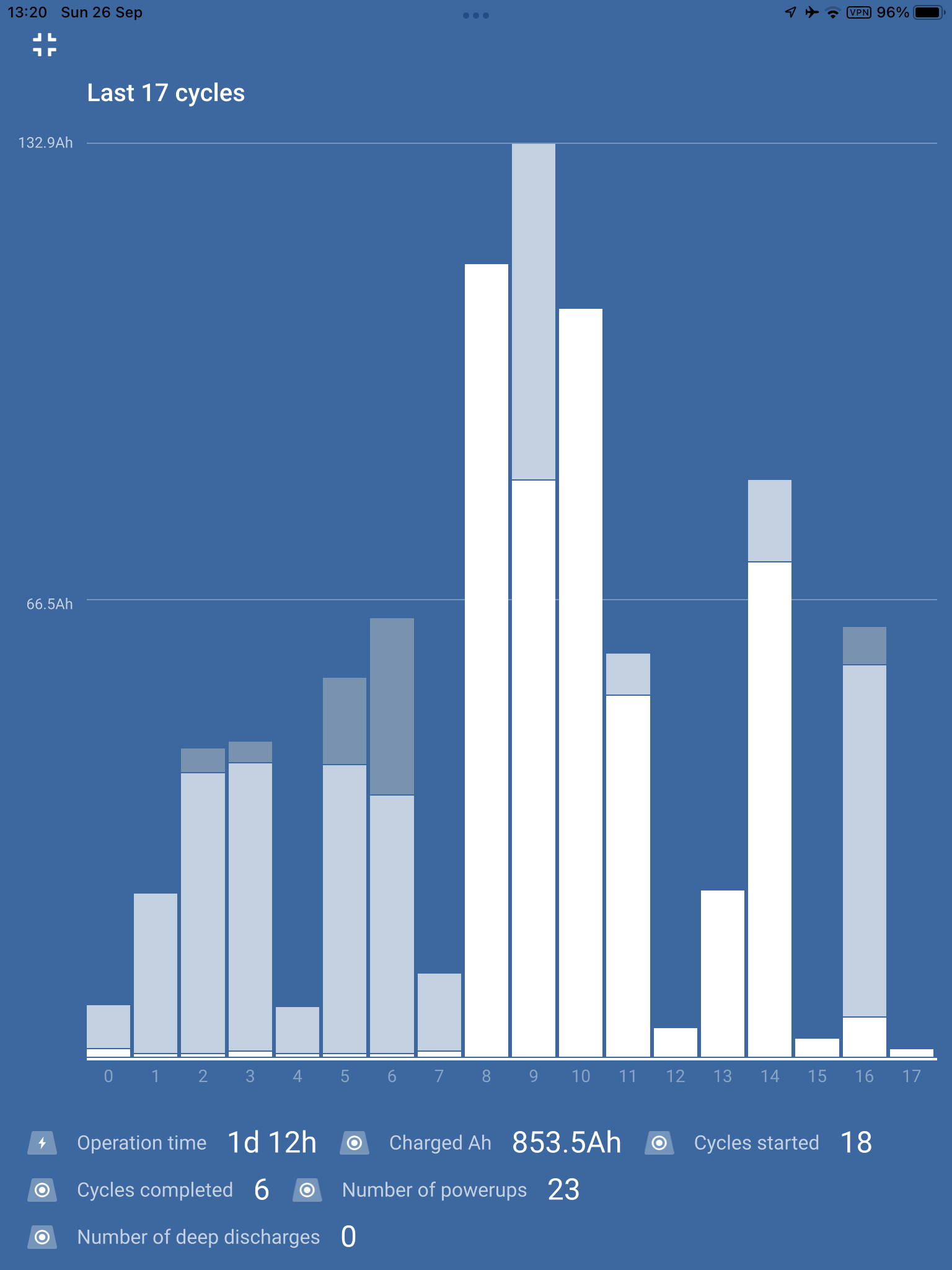I have 2x Victron Smart 100Ah LiFePO, managed by a 12/200 BMS & SmartBMV. I connected the IP22 today as they were at 50% (102Ah discharged). Usually the solar keeps everything topped off, but we've been somewhere shady for a week.
Bulk - 1m57s - 0.7Ah
Abs - 1h56m - 42.2Ah
Storage - 10m - 3Ah
at which point I pulled the plug.
I've checked the fuse. All the connections are good, straight on to the BMS. Voltages (currently 13.47 &13.48 with all cells balanced) are correct and agree on the different devices.
Reconnecting the charger again starts the process again; this time Bulk for 4s, then straight to Abs.
I think that this started when I installed firmware 3.40. It definitely didn't do it when I first purchased it in December. Looking at the History tab, it's only been the last 5 cycles where this has occurred. No changes have been made to the setup since December.




